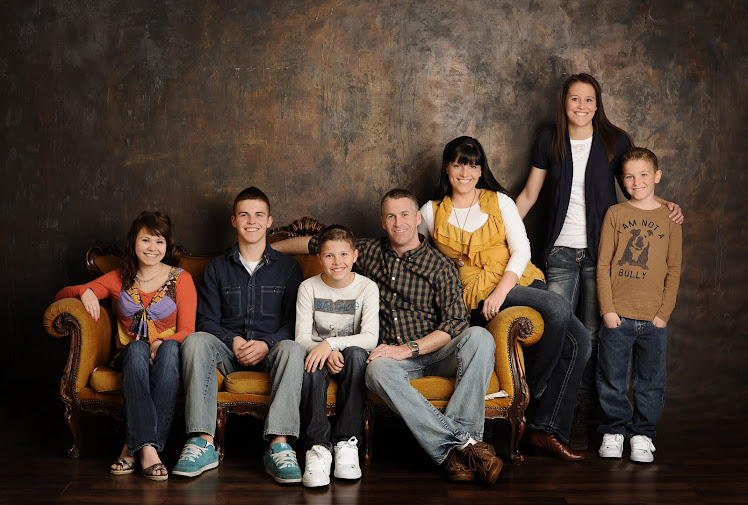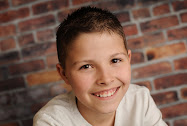Hemophilia---What is hemophilia? Hemophilia is an inherited bleeding, or coagulation, disorder. Persons with hemophilia lack the ability to stop bleeding because of the low levels, or complete absence, of specific proteins, called "factors," in their blood that are necessary for clotting. Proper clotting of blood helps prevent excessive bleeding. There are several types of hemophilias, but the most common and well known include the following:
hemophilia B - lack of factor IX (this is the kind we have)
What causes hemophilia? Hemophilia types A and B are inherited diseases passed on from a gene located on the X chromosome. Females have two X chromosomes, while males have one X and one Y chromosome. A female carrier of hemophilia has the hemophilia gene on one of her X chromosomes, and there is a 50 percent chance that she may pass the defective gene to her male offspring.
Males who inherit the defective gene will develop hemophilia. Males with hemophilia do not pass the gene to their sons; however, they do pass the gene to their daughters.
Females who inherit the defective gene will become carriers who may, in turn, have a 50 percent chance of passing it on to their children. Although females who inherit the gene generally have no active problems related to hemophilia, some may have other problems associated with bleeding, such as excessive menstrual bleeding, frequent or severe nosebleeds, or bleeding after dental procedures or surgery.
In about one-third of hemophilia cases, there is no family history of the disease. These cases are due to a new or spontaneous development of the defective gene in the female.
What are the symptoms of hemophilia? The most common symptom of hemophilia is excessive, uncontrollable bleeding because of the missing or low-level clotting factor in the blood. Bleeding may occur even when there is no injury. It most often occurs in the joints and in the head.
The following are the other most common symptoms of hemophilia. However, each individual may experience symptoms differently. Symptoms may include:
bruising
bleeds easily
bleeding into a joint
bleeding into the muscles
bleeding from injury or bleeding in the brain
other sources of bleeding
Blood found in the urine or stool may also be a symptom of hemophilia.
Bleeding from injury, or spontaneously in the brain, is the most common cause of death in children with hemophilia and the most serious bleeding complication.
Bleeding into the muscles can cause swelling, pain, and redness. Swelling from excessive blood in these areas can cause increased pressure on tissues and nerves in the area, resulting in permanent damage and/or deformity.
Hemarthrosis (bleeding into a joint) can cause pain, immobility, and eventually deformity if not medically managed properly. This is the most common site of complications due to hemophilia bleeding. These joint bleeds can lead to chronic, painful, arthritis, deformity, and crippling with repeated occurrences.
A tendency to bleed from the nose, mouth, and gums with minor trauma, teeth brushing, and/or dental work is often an indication of hemophilia.
Bruises can occur from small accidents, which can result in a large hematoma (a collection of blood under the skin causing swelling).
What are the effects of hemophilia? The most common cause of disability from hemophilia is chronic joint disease, or arthropathy, which is caused by uncontrolled bleeding into the joints.
Hemorrhage, which is a severe internal or external discharge of blood, is a continuing problem.
Treatment for hemophilia: Treatment may include:
blood transfusions
prophylactic (preventive) treatment with infused clotting factors
Blood clotting normally occurs when there is damage to a blood vessel. Platelets immediately begin to adhere to the cut edges of the vessel and release chemicals to attract even more platelets. A platelet plug is formed, and the external bleeding stops.
Next, small molecules, called clotting factors, cause strands of blood-borne materials, called fibrin, to stick together and seal the inside of the wound. Eventually, the cut blood vessel heals and the blood clot dissolves after a few days.
Hemophilia usually is inherited. This means that the disorder is passed from parents to children through the genes.
People born with hemophilia have little or no clotting factor. Clotting factor is a protein need for normal blood clotting. There are several types of clotting factors. These proteins work with platelets (PLATE-lets) to help the blood clot.
Platelets are small blood cell fragments that form in the bone marrow—a sponge-like tissue in the bones. Platelets play a major role in blood clotting.
When blood vessels are injured, clotting factors help platelets stick together to plug cuts and breaks at the site of the injury and stop bleeding. Without clotting factors, normal blood clotting can't take place.
Obviously platelets are very important to my boys since they are missing other components of the clotting cascade, which means Motrin is our of the question with a bleed because it inhibits platelet aggregation (or how the platelets stick together). Bleeds are often very painful, and Tylenol does nothing for the pain. It's hard to watch them suffer.






























